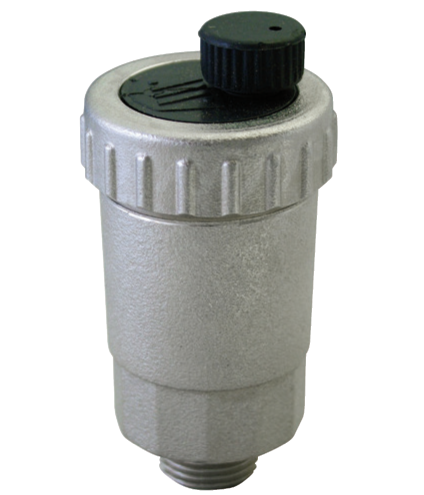A safety valve avoids blocks in the system
Discharging the air from a system through the safety valve in order to increase its thermal effectiveness

Automatic or manual, a safety valve always aims at discharging the excess gas that might gather in the critical points of a system, be they curves or maximum pipe points or radiators. This gas dissolved and released by the fluid that conducts heat inevitably tends to create noise, besides reducing the effectiveness of the system.
As we were saying, we may use the safety valve to expel these gases externally and restore the effectiveness of the system. In the event of radiators, the classic application of a manual safety valve facilitates the thermal exchange, since we come back to using the whole heat exchanger volume.
We also spoke earlier of critical points in the pipes; in fact, the water accumulation therein may be dangerous, a bubble is created that might even prevent the transit of the fluid conduit. By now, however, the pipes are installed, hence as the sole remedy to this problem we need to install a safety valve, which we find on the GNALI BOCIA catalogues in an automatic version as well.
As we were saying, we may use the safety valve to expel these gases externally and restore the effectiveness of the system. In the event of radiators, the classic application of a manual safety valve facilitates the thermal exchange, since we come back to using the whole heat exchanger volume.
We also spoke earlier of critical points in the pipes; in fact, the water accumulation therein may be dangerous, a bubble is created that might even prevent the transit of the fluid conduit. By now, however, the pipes are installed, hence as the sole remedy to this problem we need to install a safety valve, which we find on the GNALI BOCIA catalogues in an automatic version as well.
20/10/2016
I contenuti di questo sito non hanno carattere di periodicità e non rappresentano 'prodotto editoriale'.








